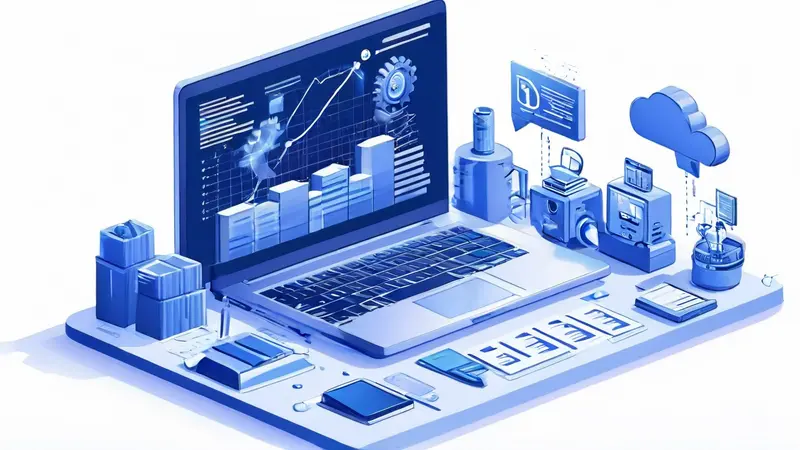
R&D DEPRECIATION: A DEEP DIVE INTO CALCULATING RESEARCH AND DEVELOPMENT EXPENSES
Whether you are a startup owner, financial analyst, or accountant, understanding the proper accounting treatment for Research and Development (R&D) expenses is crucial. R&D depreciation, in essence, is the systematic allocation of the cost of an R&D asset over its useful life. It's important to note that while some R&D costs can be capitalized and depreciated, others must be expensed as incurred according to accounting standards. The key factors affecting R&D depreciation include the nature of the expense, the stage of the research project, and the likelihood of deriving future economic benefits from the R&D activities.
In this blog post, we will delve deep into understanding the nuances of R&D depreciation, the methodology to calculate it, the accounting standards guiding its treatment, and some practical examples to illustrate these concepts.
I. UNDERSTANDING R&D DEPRECIATION
Understanding the concept of R&D depreciation starts with differentiating between two types of R&D costs: capital costs and operational costs.
Capital Costs are those associated with the purchase of long-term assets used in the R&D process, such as equipment and machinery, and software. These costs can be capitalized and depreciated over the useful life of the asset, which means spreading the cost over the period in which the asset is expected to generate benefits.
Operational Costs, on the other hand, include expenses related to the dAIly operations of R&D activities such as salaries of researchers, materials and supplies used in experiments, and other overhead costs. According to accounting standards, these costs should be expensed as incurred, meaning they are recognized in the financial statements in the period they are used, not spread over multiple periods.
II. CALCULATING R&D DEPRECIATION
Calculating the depreciation of R&D assets involves determining the useful life of the asset and the depreciation method to use.
-
Determining the Useful Life: The useful life of an R&D asset is the period over which the asset is expected to contribute to generating revenue. This period is usually estimated based on factors like the asset's expected wear and tear, the nature of the R&D project, and the rapidity of technological advancements in the industry.
-
Choosing the Depreciation Method: There are several methods of depreciation, including straight-line, declining balance, and units of production. The choice of method depends on the pattern in which the asset is expected to generate benefits.
III. ACCOUNTING STANDARDS FOR R&D DEPRECIATION
Accounting standards like the International Financial Reporting Standards (IFRS) and Generally Accepted Accounting Principles (GAAP) provide guidelines on the treatment of R&D costs.
According to IFRS, research costs should be expensed as incurred, while development costs can be capitalized if certain criteria are met. On the other hand, GAAP requires that all R&D costs be expensed as incurred.
IV. EXAMPLES OF R&D DEPRECIATION
To illustrate the concept of R&D depreciation, let's consider a couple of examples.
-
Capital Costs Example: A company purchases a machine for $100,000 to be used in R&D activities. The machine has a useful life of 5 years. Using the straight-line method of depreciation, the annual depreciation expense would be $20,000 ($100,000 / 5 years).
-
Operational Costs Example: A company incurs $50,000 in salaries for researchers working on an R&D project. These costs should be recognized as an expense in the financial statements in the period they are incurred.
In conclusion, R&D depreciation is a complex area that requires a good understanding of accounting principles and standards. It's crucial for companies to accurately calculate and record R&D depreciation to ensure their financial statements provide a true and fair view of their financial position and performance.
相关问答FAQs:
1. 什么是折旧费用?
折旧费用是指企业在使用固定资产时,由于资产的使用价值随时间的推移而减少所产生的费用。它反映了固定资产的价值逐渐减少的过程。
2. 折旧费用与研发费用有什么关系?
折旧费用与研发费用之间没有直接的关系。折旧费用是固定资产使用过程中的成本,而研发费用是企业为开发新产品、提高技术水平而进行的投入。它们是企业经营活动中两个不同的成本项目。
3. 企业可以将研发费用纳入折旧费用吗?
一般情况下,企业不能将研发费用纳入折旧费用。研发费用通常被视为独立的资本支出,并按照其他会计准则进行处理。然而,在一些特殊情况下,如符合相关法规的软件研发费用,企业可以将其资本化并按照折旧的方式进行摊销。具体情况需要根据会计准则和相关法规进行判断。





























